Are Botanical Gardens Sustainability Leaders? The Case of Burlington’s Royal Botanical Gardens
Case Study prepared by Sumra Zia, Carleton University
Keywords: sustainable development, botanical gardens, conservation, biodiversity, education
LESSONS LEARNED
The Royal Botanical Gardens span over an area of 1100 hectares and in-depth research into the case study shows the resources that are required to manage the natural and cultural landscape. The monetary resources may sometimes not even be the most important factor of governance if there are not enough skilled workers available to carry out the job. This also show that a higher level of consultation and involvement of Indigenous communities might be beneficial for creating a more sustainable dialogue between the communities that hold the rights to the land and the users of the gardens. A more holistic approach to community building is needed.
The example of RBG shows that climate action plans can take a long time to take effect but they produce rewarding results. The same goes for various conservation plans that are being practiced in RBG, they are producing positive results. The various education and interdisciplinary programs that are being taught to youth are beneficial for the whole society. They are learning to care about the environment and to be sensitive of its needs. Although the gardens work with funds available but emergency situations that effect the tourism industry also effects its economic model. Therefore, the Gardens need a sustainable economic model to generate funds without effecting development.
The presentation was delivered online on 25th November 2021. It contains a brief summary of Royal Botanical Garden’s range of functions, the significance of its location, the role it is playing for sustainable development and how successful it has been in achieving that goal.
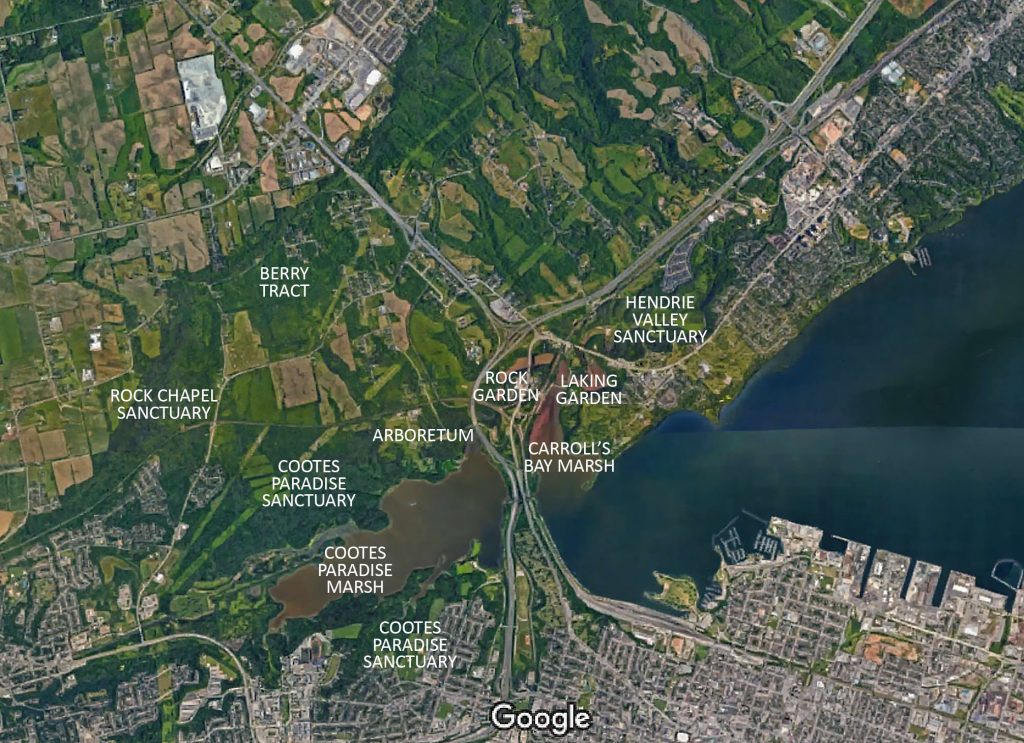
DESCRIPTION
The Royal Botanical Gardens in Burlington, Ontario are the largest botanical gardens in Canada and cover an area of about 1100 hectares. They are located on the western edge of the city of Hamilton and the whole garden complex is clustered around Burlington Bay at the western end of Lake Ontario. The relation the organization has with the Indigenous people is that,
“Royal Botanical Gardens acknowledges the long history of First Nations and Métis People in the Province of Ontario, and pays respect to the Six Nations of the Grand River Territory and the Mississaugas of the Credit First Nation, the holder of the Treaty with the Crown for these lands. The land we steward is within the traditional territories of the Haudenosaunee, Anishinaabe, and Huron-Wendat Nations.” (RBG)
The Gardens were originally commissioned as a means to beautify the route leading to the city of Burlington, but have now developed into extensive botanical gardens over the course of the 20th century. The whole complex is mainly comprised of three land use typologies, which are, the cultivated gardens, nature and sanctuaries and the built areas. These are then further divided into various reserves and activities that range from recreational activities for the community, educational programs, gardens, biodiversity reserves and protected natural landscape areas. Major sections are:
- The arboretum, with a variety of trees species.
- A series of themed gardens, that includes the newly rejuvenated Rock Garden, Laking Garden and Hendrie Park.
- The nature sanctuaries that include the Cootes Paradise Sanctuary, the Rock Chapel Sanctuary, Hendrie Valley Sanctuary and Berry Tract.
- Protected marshes of Cootes Paradise marsh and Carroll’s Bay marsh.
- Nature interpretive center
- Nature trails with a variety of different themes for each, some of which are Anishinaabe Waadiziwin trail, Bull Point trail, Ravine Road trail, Princess Point trail, North Bridle trail and many more.
- The Royal Botanical Garden Center
- Special protection areas of Spencer Creek Floodplain, Hopkin’s Woods and South Pasture swamp.
- There are also cafes and restaurants (Source: Royal Botanical Gardens, www.rbg.ca/)
The Gardens were designated as National Historic site of Canada in 1994 due to their outstanding horticulture collection back in the 1940s. Since then, the Garden complex has grown exponentially with time. Due to the unique role the gardens play for sustainable development of diverse natural reserves and conservation programs, it was recognized as a World Biosphere Reserve by UNESCO as part of the Niagara escarpment to Lake Ontario in 1990. The gardens are also a registered charitable organization and through the donations that it receives, have taken up initiatives for education, conservation, horticulture and science. (RBG) “Its (Royal Botanical Garden’s) established and evolving environmental programs provide straight-forward, workable solutions designed to maintain sustainable biodiversity in Canada, for the world.” (RBG)
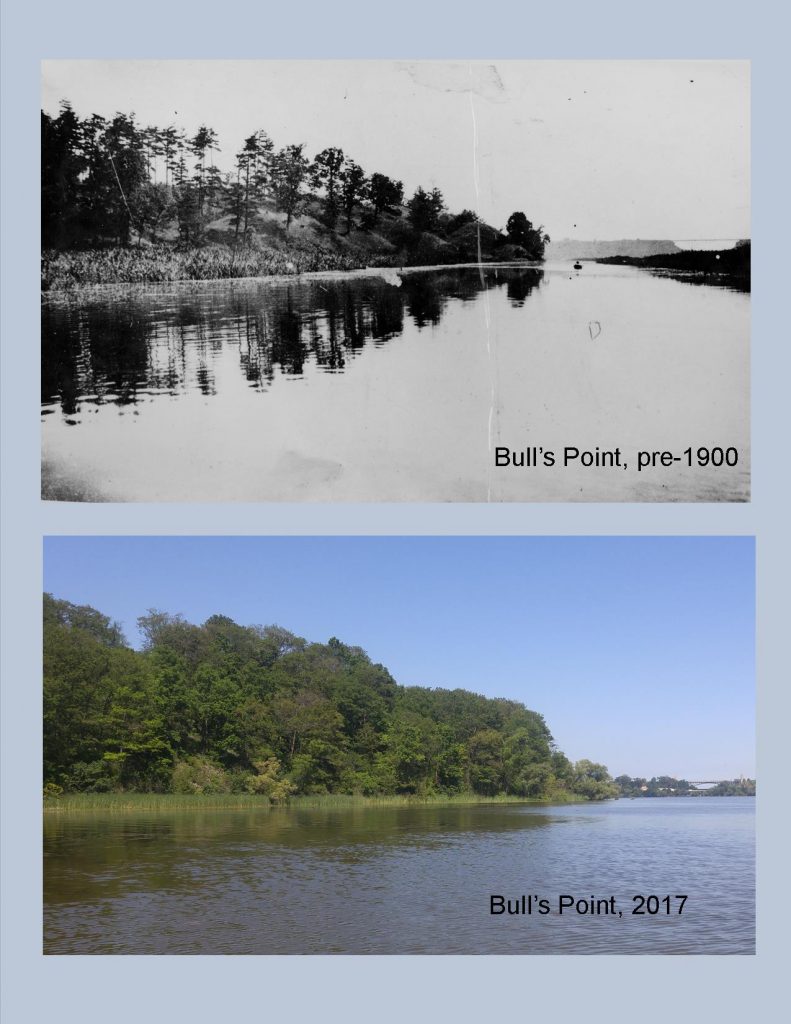
TIMELINE
The botanical gardens were initially proposed for the beautification of the northwestern entrance of the city of Hamilton. The view was an unpleasant one that had various billboards, gas stations and shanty neighbourhoods along the route between Hamilton and Toronto. Under the stewardship of Thomas Baker McQuesten the independent park developed into the Royal Botanical Gardens. The timeline of the events is following:
- 1917: Burlington Heights was recognized to be developed as a grand entranceway (RBG Archives)
- 1920s: “The Hamilton Board of Parks Management recognized the need for a counterpart in southwestern Ontario to Canada’s two botanical gardens–the Central Experimental Farm in Ottawa, and the University of British Columbia Gardens in Vancouver.” (RBG Archives)
- 1924: T.B. McQuesten put forward a proposal for Botanical Garden, that was based on the layout of KEW Botanical Gardens in London, that also contained plans for expansion in the future (RBG Archives)
- 1930: McQuesten obtained Royal assent to name the gardens “Royal Botanical Gardens”. (RBG)
- 1928: A Design Competition was held for the different sections that would later be developed in the whole complex. (RBG)
- 1927: 377 acres of land was bought by the City of Hamilton for the expansion and conservation of natural resources (RBG)
- 1932: The first couple of designed Rock Garden and Memorial Garden were opened to public (RBG)
- 1941: RBG was separated from Board of Parks management and made into an independent not-for-profit organization (RBG)
- 1958: RBG Headquarters were opened that were a public center and a focal point of the whole complex (RBG)
- 1960s: Rose Garden, Hendrie Park, Lilac Garden and Nature Interpretive center opens up (RBG)
- 1970s: Efforts for conservation of Cootes Paradise start (RBG)
- 1993: Designated as National historic site of Canada and UNESCO World Biosphere Reserve (RBG)
- 2000s: The garden organization forms the Cootes to Escarpment Eco Park System to formalize the structure of biodiversity conservation of the sanctuary. (RBG)
- 2010s: Rejuvenation projects in the Garden to increase public attraction and to make the gardens more sustainable. (RBG)
- 2019: Master plan designed for the next 25 years plan to make the Gardens more sustainable in all its aspects and functions. (RBG)
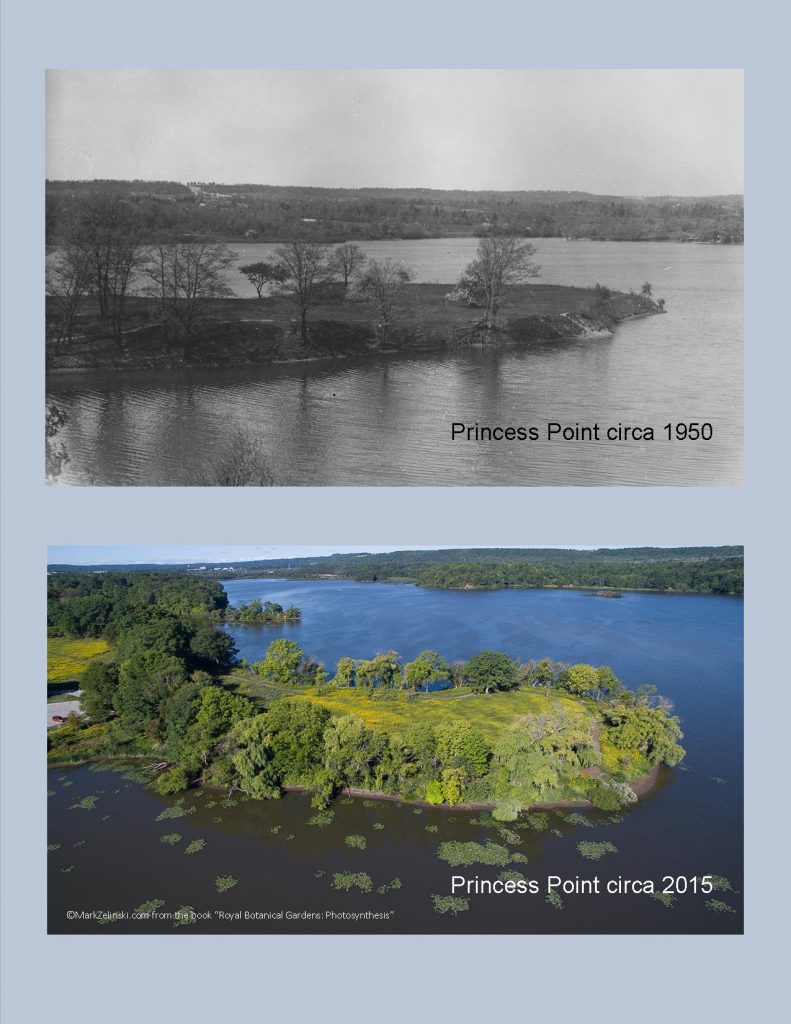
STAKEHOLDERS
The Royal Botanical Gardens cover an area of about 1100 hectares and therefore it lots of efforts and resources, both monetary and human, to run the organization effectively.
The Six Nations of the Grand River Territory and the Mississaugas of the Credit First Nation, as holders of the Treaty with the Crown for these lands are also important in cultural aspect of the area. They provide consultation for some limited activities and are invited to give insights about their relationship with plants and nature.
Since the inception of the RBG they have become a socio-cultural hub for community events and tourism, which includes local as well as international tourists. (Royal Botanical Gardens, www.rbg.ca/)
Some of the key stakeholders are:
Key organizations:
- Government of Canada
- Hamilton Board of Parks Management
- Sustainable Hamilton Burlington’s Sustainability Leadership Program
- Parks Canada
- American Public Gardens Association
- Botanic Gardens Conservation International
Owners/Rightsholders/Users
- Mississaugas of the New Credit First Nation
- Wikwemikong Unceded Nation
- Volunteer Board of Directors with a CEO
- Appointed representatives of four levels of government
- The Government of Ontario
- City of Burlington
- City of Hamilton
- RBG Auxiliary
- Visitors
Sustainability Consultants
- Green Economy Canada
- Sustainable Hamilton Burlington
- Hamilton Conservation Authority
- Hamilton Naturalists Club
- Conservation Halton
Design Consultants
- MT Planners
- Carl Borgstrom
- CS&P Architects
- Janet Rosenberg Studio
- Matt Broman
- J. Austin Floyd
The RBG is run by a volunteer group of directors and an RBG auxiliary that volunteers their hours for work around the gardens. This includes working in the fields, tending to the gardens, managing the library and other maintenance and management roles. For the development of the 25-year masterplan the organization has worked with MT planners. The garden has been expanding in providing educational workshops and courses resulting in youth becoming an important visitor group. Throughout the year there are various activities planned for young people that allows them to have fun while learning.
Organizations that help RBG with its sustainable development goals include: Sustainable Hamilton Burlington’s Sustainability Leadership Program, American Public Gardens Association, Botanic Gardens Conservation International, Hamilton Conservation Authority, Hamilton Naturalists Club and Conservation Halton among others.
The Mississaugas of the New Credit First Nation are also consulted for the activities around RBG, namely the Anishinaabe Waadiziwin trail, that pays homage to the use of plants in Anishinaabe culture. Although RBG promotes sustainable development, similar to the ways of the Indigenous nations, there seems to be a lack of inclusion of the Indigenous people around the activities. (Royal Botanical Gardens)
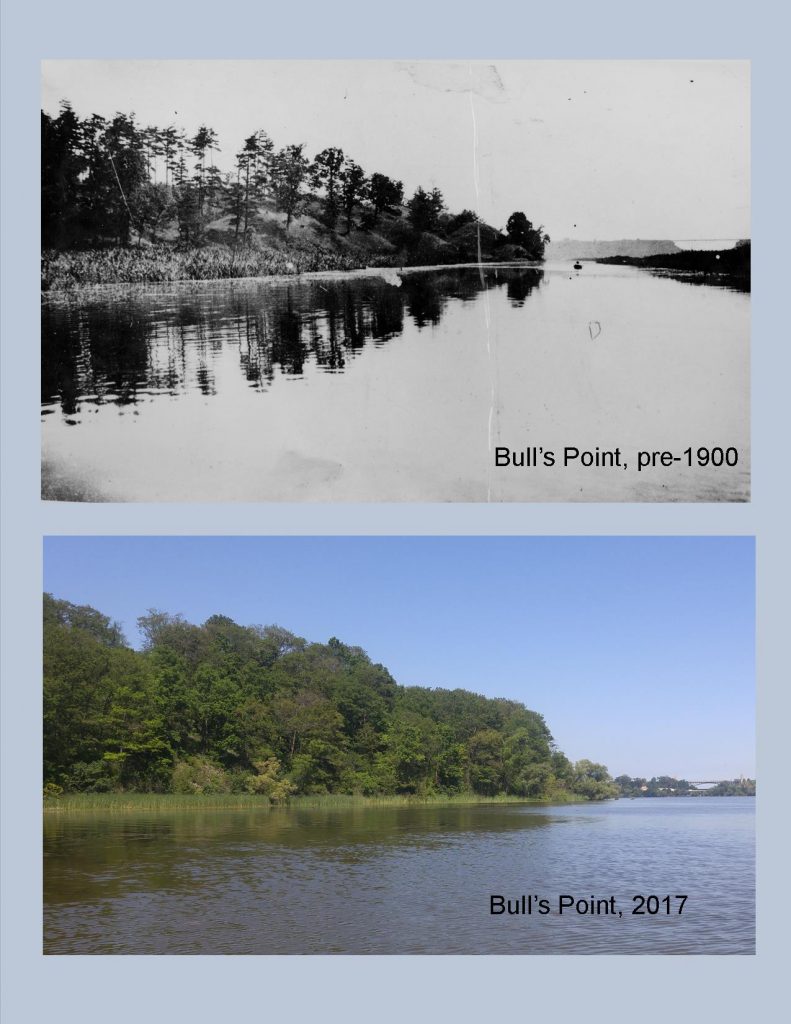
HERITAGE
The Royal Botanical Gardens were designated in 1993 as a National Historic Site of Canada because of being one of Canada’s most important botanical gardens. They have been developing for the past 60 years within an urban context without any enclosure and as an inclusive space. The development of the gardens has benefited from nation’s most talented landscape architects, botanists and plant curators. “The Gardens’ unusual design, consisting of a series of discrete gardens and conservation areas set within a sprawling network of parkway, marked a radical departure from the 19th-century conception of a botanical garden.” (Parks Canada) Both the natural and cultural heritage of the site are interlinked and work in harmony.
Natural heritage: The location of the site on Hamilton Bay, near Cootes Paradise and Niagara Escarpment is also a part of its natural heritage. “The Conservation Area covers 800 hectares of marsh, shallow lake, woodland, meadow, escarpment face, and agricultural land maintained in a naturalized state.” (Parks Canada) “The cultivated gardens and nature sanctuaries of Royal Botanical Gardens are home to over 20 individuals classified as heritage trees.” (RBG) These trees are designated according to their cultural values and the age. There are trails throughout the garden to celebrate this natural heritage. The garden complex is also home to endangered species such as the bumble bee.
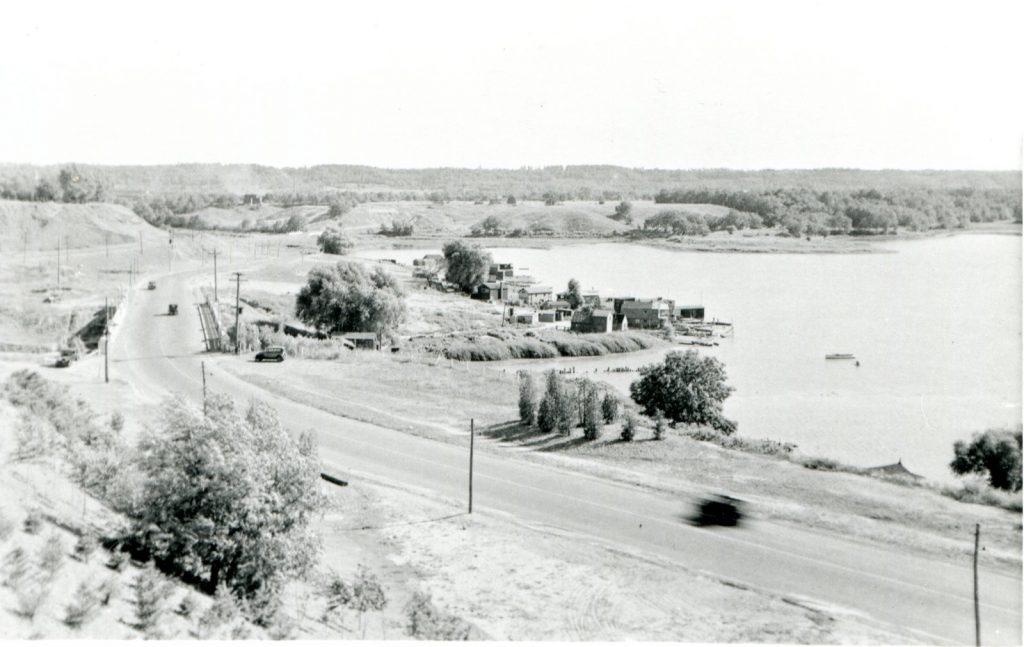
Cultural heritage: An important factor of the heritage of the site is its evolution as living heritage. The Rock Garden was developed in an abandoned gravel pit. A gravel pit has adverse effects on the environment and may cause erosion, dust pollution, soil and water contamination and the sights around it are not aesthetically pleasing. Therefore, the reclamation of the land by Carl Borgstrom through his design gave the land a new purpose. He used the natural contours of the pit, “transforming the pit into an intricate landscape of picturesque winding paths, hidden flights of steps, ledges, crevices and pools.” (Parks Canada)
The other significant cultural heritage aspects of RBG according to Parks Canada are:
- Plant curator K. Matthew Broman designed the Laking Garden in 1947. It functions as a trial garden for hardy herbaceous plant collections and includes a major iris collection.
- Landscape architect J. Austin Floyd designed the formal garden in Hendrie Park in 1962. Influenced by the International Style, Floyd created a geometric framework for avenues and flower beds, organized along a principal axis that is reminiscent of Renaissance Garden design.
- The Teaching Garden, first developed in 1947-1948 as an educational project for children, includes a house, a greenhouse and six hectares of gardens containing plants selected for their aesthetic appeal, sturdiness and educational value.
- The Arboretum, developed in the 1950s and 1960s, was designed to facilitate automobile viewing, with trees planted on avenues radiating from a central parking circle. The Katie Osborne Lilac Garden, begun in 1960-1961, is now the largest living collection of lilacs in the world.
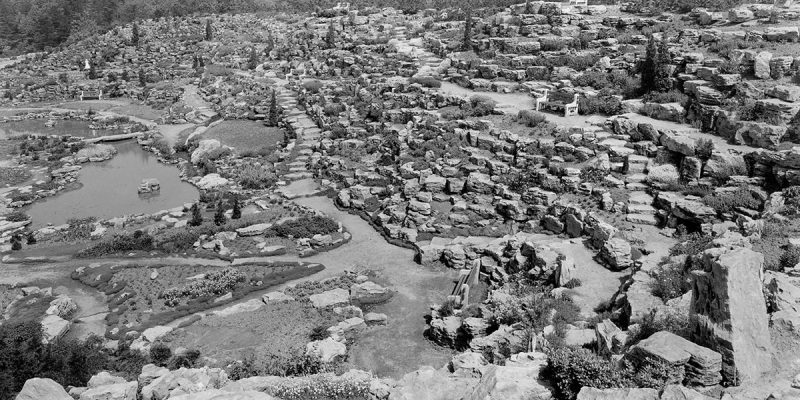
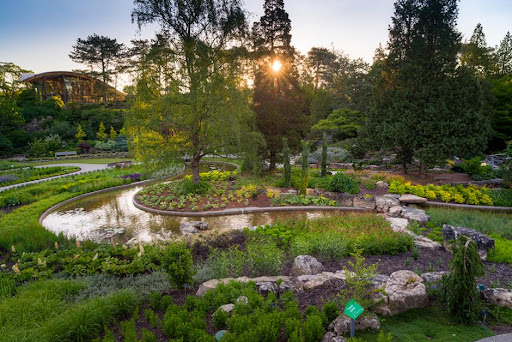
SUSTAINABILITY
The RGB mission statement regarding sustainability states, “At RBG our mission is to connect people, plants and place for the purpose of nurturing and preserving healthy growing life on our planet. We are a biodiversity-based organization, and we know that climate change poses enormous threats to the plants that sustain our planet. Thus, our mission, mandate and future are deeply connected to sustainability.” (RBG) Keeping in line with their goals, RBG has taken various steps for environmental, social, cultural and economic sustainability. It has even developed a 25-year masterplan for future sustainable development.
Environmental sustainability: RBG is at the forefront of environmental sustainability. Various projects have been implemented on site in this regard. Initiatives to achieve environmental sustainability include, lighting retrofits throughout the built structures of the garden, with those that consume less energy and are long lasting. Solar panels, as a source of alternate energy, have also been installed to power some of the structures, such as the Nature Interpretive center and the RBG headquarters. Apart from this, new electric vehicle (EV) charging stations have also been set up, together with upgrades to the HVAC system at their headquarters that are more energy efficient. (Royal Botanical Gardens, sustainability)
The Rose Garden was redesigned according to modern sustainable agricultural methods. A system of drip irrigation was introduced that conserved water usage and prevented wastage. A new type of more resistant roses was also planted that reduced the usage of fertilizers and pesticides. The Peter and Camilla Daglish Atrium was certified LEED Gold for its design.
“The Atrium’s rooftop captures and stores rainwater to be used for flushing toilets and urinals in the washrooms. On the main level, under the floor is 2.5 km of radiant in-floor heating designed to absorb and gradually release heat throughout the winter months. Once the warmer weather arrives automated sensors keep the area cool by controlling shade curtains and windows to while also balancing levels of natural light.” (RBG)
Other environmental initiatives includes closing off sensitive natural areas and monitoring the activities of the visitors, so as to avoid harm to the flora and fauna. There is also a Project Paradise for wetland restoration of Cootes Paradise. RBG has also designed a climate model that measures and maps local climate changes to form solutions of this problem. Certain smaller scale schemes have also been adopted to reduce the carbon footprint and make the garden more resourceful. These include the installation of permeable pavers in the Scented Gardens to reduce the rainwater run-off and recharge ground water levels and the project of Treecycling in which the wood of the trees, that had to be cut down, is used to make utensils. RBG is also focusing on actions to reduce their greenhouse gas emissions, water consumption and waste diversion to slow down the worst impacts of climate change (Royal Botanical Gardens, sustainability)
Socio-Cultural sustainability: The RBG has developed over a period of 60 years into a regular recreative space for the local community. There are spaces designated in the gardens for marriage ceremonies, parties, cafes, picnics and even camping. Throughout the year these activities are tailored according to the weather conditions and the seasonal festivities and therefore attract an immense number of tourists and locals. Other factors are that there are certain activities that can be enjoyed by all, free of charge and for others there is a fee of $20 and for students $16. This ensures that people from all socio-economic groups are able to visit.
There are education programs for children for value based and experiential learning. There are proper protocols for admission and classes are held on a daily basis. There are also youth programs and clubs to engage the young leaders of tomorrow, such as Yes Alliance, Junior Naturalist Club and Camp Leadership Program. This ensures that the adults responsible for the future are well-informed and well-aware of their natural heritage. There are also general workshops held that focus the areas of gardening, nature, botanical arts and wellness and can really benefit and educate the common public.
To educate the visitors of the sacred ways and connections of the Indigenous people, the Anishinaabe Waadiziwin trail has been designed. “Several theme-based interpretive nodes offer traditional perspectives on plants of the area, with content by Joseph Pitawanakwat, traditional plant use educator and consultant, and Elders from Mississaugas of the New Credit First Nation.” The plant uses described on the trail reflect traditional Anishinaabe knowledge and cultural beliefs. A more permanent inclusion of local Indigenous communities in decision making and development process could proof be advantageous for further sustainable development. (Royal Botanical Gardens, sustainability)
Economic sustainability: At the time of its inception, RBG, was funded by the city of Hamilton because it fell into its jurisdiction. When it was later taken over by the province of Ontario, its source of capital shifted too. In the early 1980s RBG saw some funding restrictions from the government and implemented an admission fee for the cultivated gardens to become self-reliant. From 2006, 40% of the monetary resources are given by the Province of Ontario, City of Hamilton and Region of Halton, while the rest is generated through the fees charged for admissions, memberships, donations, summer camps and fees for service. There are also fundraising events hosted on the grounds of the gardens. The RBG Auxiliary is a volunteer group that donates hours and raises money for the gardens. The garden also promotes economic sustainability through teaching the local community for more sustainable ways of gardening at their homes.
Although the current economic model fulfills the needs of the Gardens but they are not very sustainable. At the start of the Covid 19 pandemic, various activities at the complex had to be shut down because of limited resources. The funds generated through tourism and other activities halted. Therefore, there is a need for the better development of economic sustainability. (Royal Botanical Gardens, sustainability)
MEASUREMENT
Policies that have been applied for the assessment of sustainability at Royal Botanical Gardens include:
Sustainable Hamilton Burlington’s “Sustainable Business Initiative:
| Measures | Performance of the Project |
| Reducing the greenhouse gas emissions (GHGs) by 20% of the 2017 emissions over ten years. | While efforts are being made to reduce the greenhouse gas emissions, RBG is not currently on track to meet the reduction target as shown in Figure 8 |
| Track water consumption in detail so that areas can be identified where there are opportunities to conserve and reduce the impact of the complex on the environment | The garden has many kilometers of irrigation lines and has invested in systems to better monitor water use in gardens and buildings in the last two years and there is a reduction as a result. Water consumption by year: 2017 – 35,576 m3, 2018 – 35,068 m3, 2019 – 29,637 m3, 2020 – 21,357 m3. The annual water consumption is calculated using the utility bills. |
| Waste Diversion is a measure of how much material disposed is diverted away from landfill to be recycled or re-used. A 100% diversion rate would mean nothing is going to landfill, so a higher diversion rate is ideal. | In 2017 we invested in an entirely new waste diversion program and rolled out dozens of new two- and three-stream bins. Some of the materials that cannot be recycled are single use plastic cups for tea and coffee and therefore the cups used at RBG are all BPI certified compostable. (Royal Botanical Gardens, sustainability) |
The efforts of RBG to reduce the impacts of Green House Gas emissions, reduction of water consumption and the waste that is produced by the complex shows that although there is not a radical change in the figures but this slow could help safe the environment.

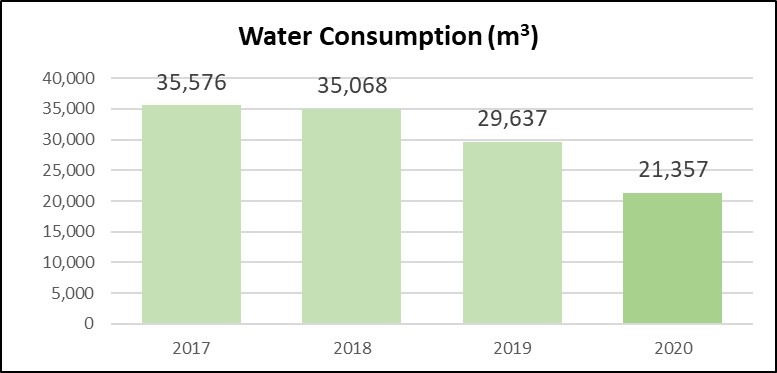
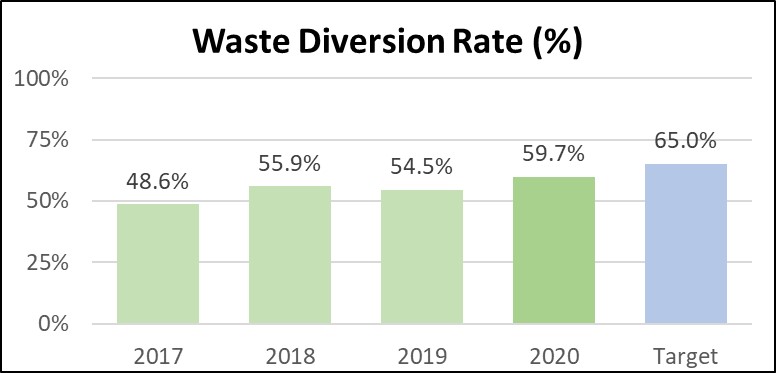
UN Sustainable Development Goal
| Measures | Performance of the Project |
| Goal 4: Ensure inclusive and equitable quality education and promote lifelong learning opportunities for all Target 4.4: By 2030, substantially increase the number of youth and adults who have relevant skills, including technical and vocational skills, for employment, decent jobs and entrepreneurship | There are several programs that have been developed for the education of the youth and adults. They are also taught skills to apply for sustainable gardening practices. Apart from this the volunteering positions teach them skills and ethics of working and prepares them for more permanent job positions for the future |
| Goal 8: Promote sustained, inclusive and sustainable economic growth, full and productive employment and decent work for all Target 8.9: By 2030, devise and implement policies to promote sustainable tourism that creates jobs and promotes local culture and products | The master plan developed by RBG for future development includes various proposals for economic development. New business ventures would be opened in collaboration with the Aldershot community that would open multiple income venues for the locals |
| Goal 13: Take urgent action to combat climate change and its impacts Target 13.1: Strengthen resilience and adaptive capacity to climate-related hazards and natural disasters in all countries Target 13.3: Improve education, awareness-raising and human and institutional capacity on climate change mitigation, adaptation, impact reduction and early warning | There is a local climate model being developed by RBG that measures the changes in local climate to combat them |
| Goal 14: Conserve and sustainably use the oceans, seas and marine resources for sustainable development Target 14.2: By 2020, sustainably manage and protect marine and coastal ecosystems to avoid significant adverse impacts, including by strengthening their resilience, and take action for their restoration in order to achieve healthy and productive oceans | The Cootes paradise has various conservation projects ongoing to preserve the unique natural environment. A system of filtration of various types of fish species has also been developed to protect the endangered species |
| Goal 15: Protect, restore and promote sustainable use of terrestrial ecosystems, sustainably manage forests, combat desertification, and halt and reverse land degradation and halt biodiversity loss Target 15.5: Take urgent and significant action to reduce the degradation of natural habitats, halt the loss of biodiversity and, by 2020, protect and prevent the extinction of threatened species | Various species of plants, insects and trees are protected in the RBG. As an essential measure, a category is also made for Special Protection areas that are closed off from public access. Almost 20% of the RBG land is protected under this category (Royal Botanical Gardens, sustainability and UN SDGs) |
The Royal Botanical Gardens follow various SDGs and they are also a part of UNESCO Bioreserve which makes them an important educational place too.
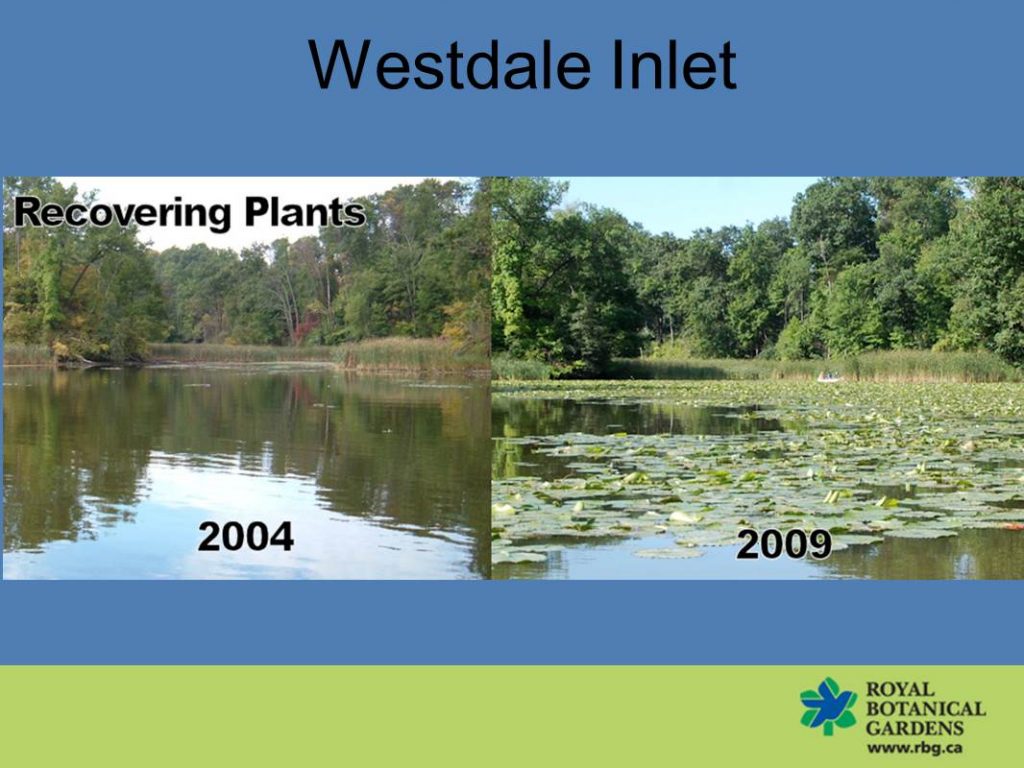
Hamilton Health Sciences:
| Measures | Performance of the Project |
| Environmental initiative award to reduce the impact on the environment | The adoption of sustainable agricultural methods in the Rose Garden has resulted in the reduction of water consumption, use of pesticides and even the fertilizers used for the different types of roses. (Source: Royal Botanical Gardens, sustainability) |
WORKS CITED
Books/book chapters/journal articles
- Sharrock, Suzanne, and Paul Smith. “Botanic Gardens and Their Contribution to the Sustainable Development Goals.” BGJournal, vol. 15, no. 1, Jan. 2018, doi: https://www.bgci.org/wp/wp-content/uploads/2019/04/BGjournal%2015_1.pdf.
- Zelenika, Ivana, et al. “Sustainability Education in a Botanical Garden Promotes Environmental Knowledge, Attitudes and Willingness to Act.” Environmental Education Research, vol. 24, no. 11, 2018, pp. 1581–1596., doi:10.1080/13504622.2018.1492705.
Policies and Reports
- UNESCO. “Niagara Escarpment Biosphere Reserve, Canada.” UNESCO, 14 Dec. 2020,
- United Nations. “The 17 Goals | Sustainable Development.” United Nations, United Nations, .
Websites
- Carbon Leadership Forum. “EC3.” Carbon Leadership Forum, 6 Oct. 2021, .
- Johnnyspade. “Royal Botanical Gardens.” Green Economy Canada, 3 Dec. 2019, .
- Parks Canada. “Royal Botanical Gardens National Historic Site of Canada.” Parks Canada, 2007, .
- Wikipedia. “Royal Botanical Gardens (Ontario).” Wikipedia, Wikimedia Foundation, 28 Sept. 2021, .
This case study makes extensive use of the RBG website, including the following specific web pages:
- Royal Botanical Gardens. “Garden’s History.” More about RBG, 2009.
- Royal Botanical Garden. “Indigenous Trail.” Royal Botanical Gardens.
- Royal Botanical Garden. “Our Story.” Royal Botanical Gardens.
- Royal Botanical Gardens. “Sustainability.” Royal Botanical Gardens.
Banner image: Aerial view of the Royal Botanical Gardens Burlington (Source: Google Maps, 2021)